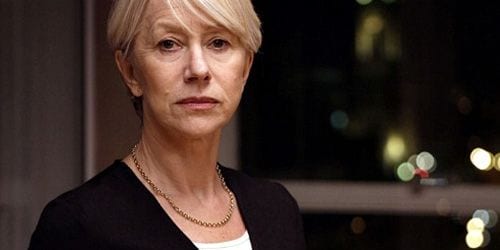
Before becoming internationally famous for playing British monarchs on film, Helen Mirren was a television sensation for her portrayal of Detective Jane Tennison in Prime Suspect. The British series, which spanned over 13 years, might be the finest procedural drama ever made. Indeed, it allowed English television to set standards that still determine how the genre is approached. Mostly set in London, the series tackles the inequality observed by female inspectors in a predominantly male world, and also deals with social issues ranging from racism to child abuse.
The first series premiered in 1993 and introduced us to Tennison, a strong willed Detective Chief Inspector working with Scotland Yard who takes over a murder investigation after the sudden death of the lead inspector. From its workmanlike technique, the show makes it clear that it plans to be as straightforward as its leading lady, so much even that we first meet Tennison in the most menial of ways.
That she is denied a big entrance shows the tremendous respect the writers have for a character that more than anything longs to be treated equally by her peers. Even though we see her private life (Tom Wilkinson plays her love interest), the show thrives when Tennison is at work and seamlessly blends the crudeness of the investigation with the disturbing mental abuse Tennison is subjected to by her sexist colleagues.
Interestingly enough, by the end of the first series we can detect that the creators don’t mean to preach endlessly about gender inequality and all the subsequent series tend to underplay this to the point where it becomes scarily “normal” to see her facing old problems. They make a stronger point precisely by staying away from the conventional ways in which televised dramas try to teach lessons.
In the second series Tennison is involved in an investigation that eerily recalls current racial profiling. Jane is given a new love interest in the shape of Colin Salmon, and includes a subplot involving the media that threatens to destroy Tennison’s newfound power. Once again by observing this from an objective distance, the second series makes us question the way in which women are scrutinized and demonized in the media for the same reasons their male counterparts gain more positive notoriety.
The first five Prime Suspect series were shot consecutively and each allowed Mirren to find new layers in her character. It might sound blasphemous to suggest that Mirren’s television work is much more impressive than anything she’s done on the big screen, but this has a lot to do with the way in which she’s not overtly sexualized or turned into a holy cow.
Her approach to Tennison’s behavior is efficient and natural, while her movies have always highlighted her impressive technique. Tennison feels like a completely lived-in woman, Mirren’s voice even adjusting to her volatile but mostly serene character. Watching Tennison quietly demand something from her staff is more intimidating than watching some of her recent cinematic performances which turn her into a screaming diva.
By the fifth series, afraid of being typecast, Mirren decided to take a break and returned to the character almost seven years later for the sixth series in which Tennison faces impending retirement. This series is especially effective because it deals with aging as Jane investigates war crimes. This chapter also sees the action return to London, after a short stint in Manchester.
Throughout the series, the writers cleverly inserted political commentary that more often than not seems premonitory. Series six for example features the assassination of a refugee that eerily recalls the way in which the right wing is encouraging current European societies to send foreigners away and invites them to act violently towards so-called intruders.
The last series focuses on Jane’s alcoholism, but filters it through the lens of depression after her father passes away. The main investigation in this chapter is the murder of a young woman that helps Tennison deal with her own dark issues. Despite the fact that the cases often suggest that the writers were trying to teach Jane life lessons by giving her exactly what she needed at a specific moment in her life, series six is a brilliant conclusion because it plays with our notion of who this woman has always been.
Have we really known her after spending so much time with her? Even more importantly, does she even know herself?
Prime Suspect: The Complete Collection was released by Acorn Media in a luxurious Blu-ray set containing all the series. Despite their age and the lack of visual splendor in the aesthetics, it’s extremely pleasant to watch the show as its creators intended it to be seen.
Bonus features are limited to a few making-of specials and are mostly dedicated to the newer series. While it unarguably would’ve been a delight to see Mirren talk about the character throughout the years (but who could’ve predicted where home media would go?), bonus features aren’t exactly necessary in a boxset whose major flaw is that you’ll want to sit through the entire thing all at once. Prime Suspect is television at its finest.
